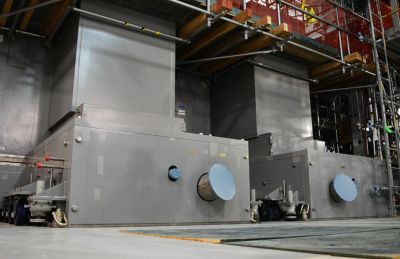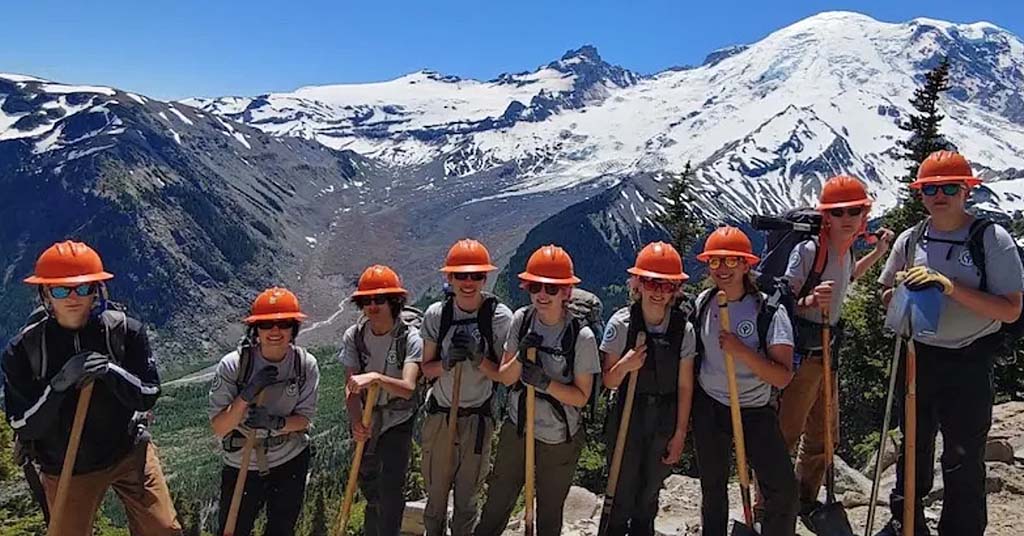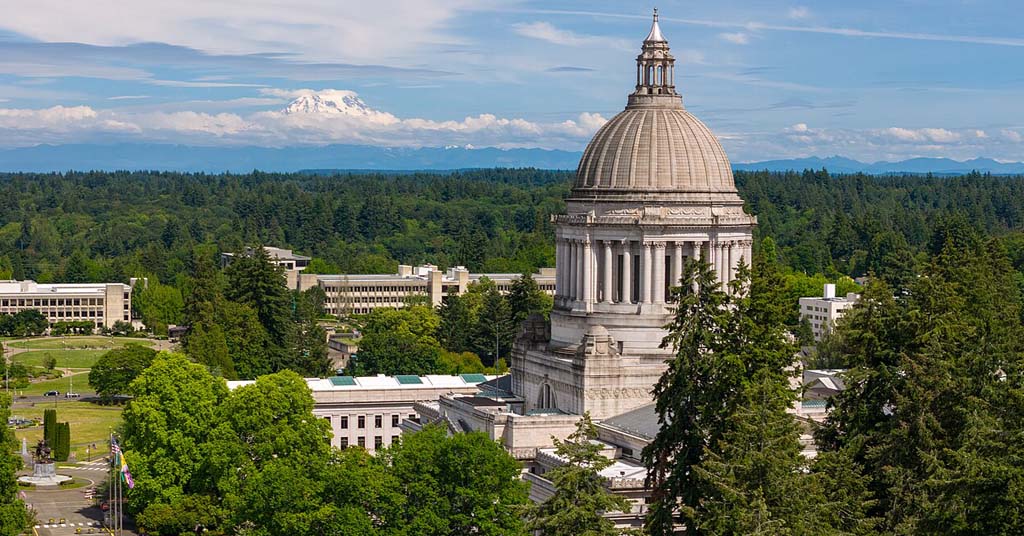Tribes, others react with anger to a recent federal downgrading of legally mandated cleanup rules on nuclear waste

Not going away: Around Hanford Site, nine closed nuclear reactors sit on the Columbia River shoreline. Photo: Jurgenhessphotography.com
By Jordan Rane. March 9, 2022. Can the analogy of sweeping dust under the rug—the radioactive kind—be used to describe a proposed cleanup strategy by the federal government at the decommissioned Hanford nuclear site?
Opponents of the Biden administration’s recently released “Assessment of the Department of Energy’s Interpretation of the Definition of High-Level Radioactive Waste” would likely say yes.
That’s a mouthful. Here’s what it means.
Under federal law, high-level radioactive waste must be vitrified—that is, solidified into a stabilized glass product and stored in a deep national repository (that has yet to be established somewhere).
It’s a process that’s extremely time-consuming and expensive.
MORE: Hanford Site cleanup effort hits milestone
The DOE’s latest “Assessment” on how to best dispose of 56 million gallons of liquid waste sitting in 177 underground storage tanks at Hanford would wipe out the automatic “high-level” designation.
Instead, in accordance with a 2019 DOE decision made under the Trump administration, the designation of “high-level” waste will be reinterpreted in way that would exclude waste created by the production of nuclear weapons that took place for decades at the Hanford Site in southwest Washington.
“We continue to maintain the position that the Department of Energy does not have the authority to reinterpret the meaning of high-level waste, much less to reclassify waste on its own,” Mike Faulk, press secretary for Wash. Gov. Jay Inslee, told Bloomberg Law last week.
“It’s a slap in the face,” added Tom Zeilman, counsel for the Yakama Nation, in the same report. “We expected the Biden administration to take a different tack.”
Long-term neglect
If you can get past the title and 21 pages of legalese, the DOE document essentially affirms a Trump administration reinterpretation (or selective downgrading) of what constitutes “high-level radioactive waste.”
In the case of downgraded waste, the agency would, in lieu of the mandated vitrification, opt for sealing it in place or transporting it to another disposal site.

Heat treatment: 30-ton melters at Hanford Site heat low-activity waste into liquid at 2,100 degrees. The waste then flows from melters into canisters. Photo: DOE
“If we just maintain the status quo, and we insist on the plan as it currently exists, we just don’t think we’ll be on the path to success,” said David Reeploeg, executive director of Hanford Communities, an intergovernmental cooperative of the two counties and four cities that are home to nearly 100 percent of Hanford’s work force.
The DOE currently spends $2.7 billion annually for cleanup operations at Hanford, which employs about 8,000 workers.
Hanford Communities largely supports the DOE’s reinterpretation.
“We are very optimistic about this [strategy’s] potential,” Reeploeg told Bloomberg Law.
Legal clashes over Hanford waste classification have been going on for decades.
While the DOE has pledged to work toward a resolution with state and Tribal officials, its current plan could lead to a surge in litigation.
MORE: Environmental justice at Hanford: Reconnecting Indigenous people to their land
“We do not feel that the government at this point is really looking at the long-term consequences of giving the DOE this unlimited discretion,” said Zeilman, counsel for the Yakama Nation, which has historic ties to the vast Hanford area along with other Tribes of the Columbia River Plateau. “They are looking to dispose of waste in place for potentially millions of years.”
War, damage
Plutonium production began at Hanford in 1943. Initially, the plutonium was used to build the atomic bomb dropped by the United States on Nagasaki, Japan, on Aug. 9, 1945, effectively bringing an end to World War II.
After World War II, Hanford shifted to a Cold War footing, eventually occupying 586 square miles. At its peak, nine reactors were creating most of the plutonium used in the U.S. military’s nuclear arsenal.
The last of Hanford’s reactors ceased operation in 1987, leaving behind an unprecedented legacy of environmental pollution that’s earned the grim reputation as the most polluted place in the Western Hemisphere and the United States’ biggest environmental disaster area.
Columbia Insight contributing editor Jordan Rane is an award-winning journalist whose work has appeared in CNN.com, Outside, Men’s Journal and the Los Angeles Times.










